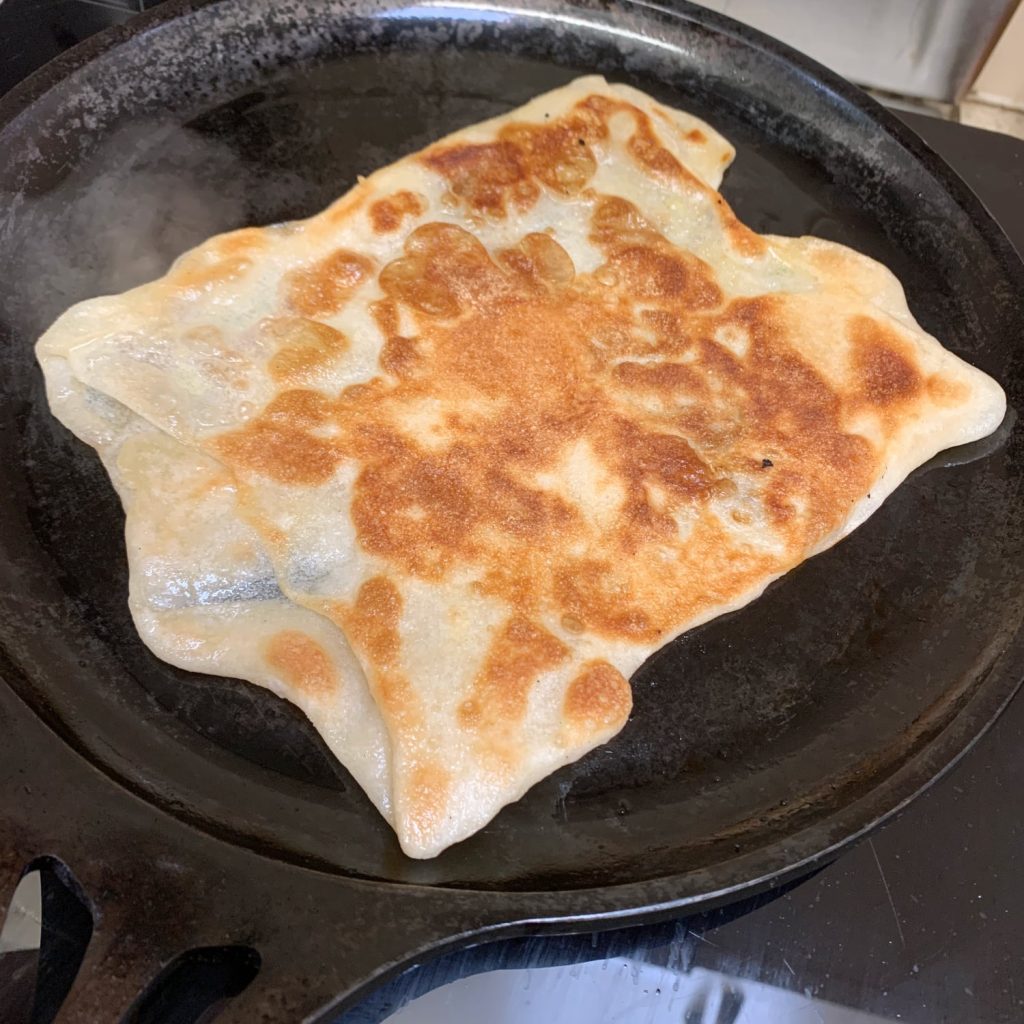scrumptious
roti
This recipe is a result of trying several recipes and combining the best aspects. I am also mindful of the fact that my kitchen has been like a fridge for months and this may not be quite so easy in a hot steamy kitchen. My kitchen is a tiny matchbox but works well. My stainless-steel work bench conceals marble underneath so it’s great for all types of pastry making and rolling.
Anyone who has watched the sidewalk roti maker in Malaysia will have wondered at their skill, tossing the dough in the air until it is like a flimsy pizza and plonking it onto a sizzling flat plate. The roti is a favoured breakfast treat with maybe a fried egg and sambal, or with some sort of curry gravy or dahl, but great at any time of the day. The similarity between roti dough and the pita of Greece, Cyprus, the Middle East and Eastern European countries like Serbia…even the Italian Sfogliatelle is amazing and yet another story of migratory dishes that have spread and morphed across the world.
This method is quite unconventional, but after trying a number of methods it is the best I can come up with. Only someone who makes dozens, even hundreds on a daily basis can gain the skills of the roadside roti maker, twirling the dough in the air until it is tissue thin, slapping it onto their hotplate, splashing it with ghee and folding it perfectly. They must have hands as tough as nails because tongs are clearly considered not to be useful. It’s rather slow going, so maybe like a dumpling evening everyone could make their own??? I have done a test freezing the raw roti and it works well, so always an option to make them a couple of days before, however, like crepes they are best cooked and eaten.
AO 17 SEPTEMBER, 2022

ROTI
TAKE A
bit of
PRACTICE
makes 6 or [12]
250g flour [500g]
10g fine sea salt [20g]
150g cold water [300g]
100g vegetable oil [200g]
Ghee or clarified butter
day one
Put the flour and salt in your electric mixing bowl [I use the creaming beater for the small batch and the k-beater for the larger batch]…with the motor running at slow speed add the water, and work at slow speed until it is a smooth ball.
Put the dough in a freezer bag and rest in a cool place for 3-4 hours [or overnight]….above 30°C room temperature I’d be tempted to refrigerate the dough for a couple of hours.
Put the oil into a suitably sized container with a tight seal. Unwrap the dough and without using any additional flour roll it into a cylinder about 10cm in diameter and then cut the dough into 6 [12] equal slices. Roll each slice into a smooth ball and drop it into the oil, turning it over so that it is evenly coated with the oil.
We did try using the coconut oil, but out kitchen is too cold and even at room temperature it sets solid and frankly, is a complete spoiler.
Turn the container over a couple of times and keep the prepared balls in a cool place overnight.
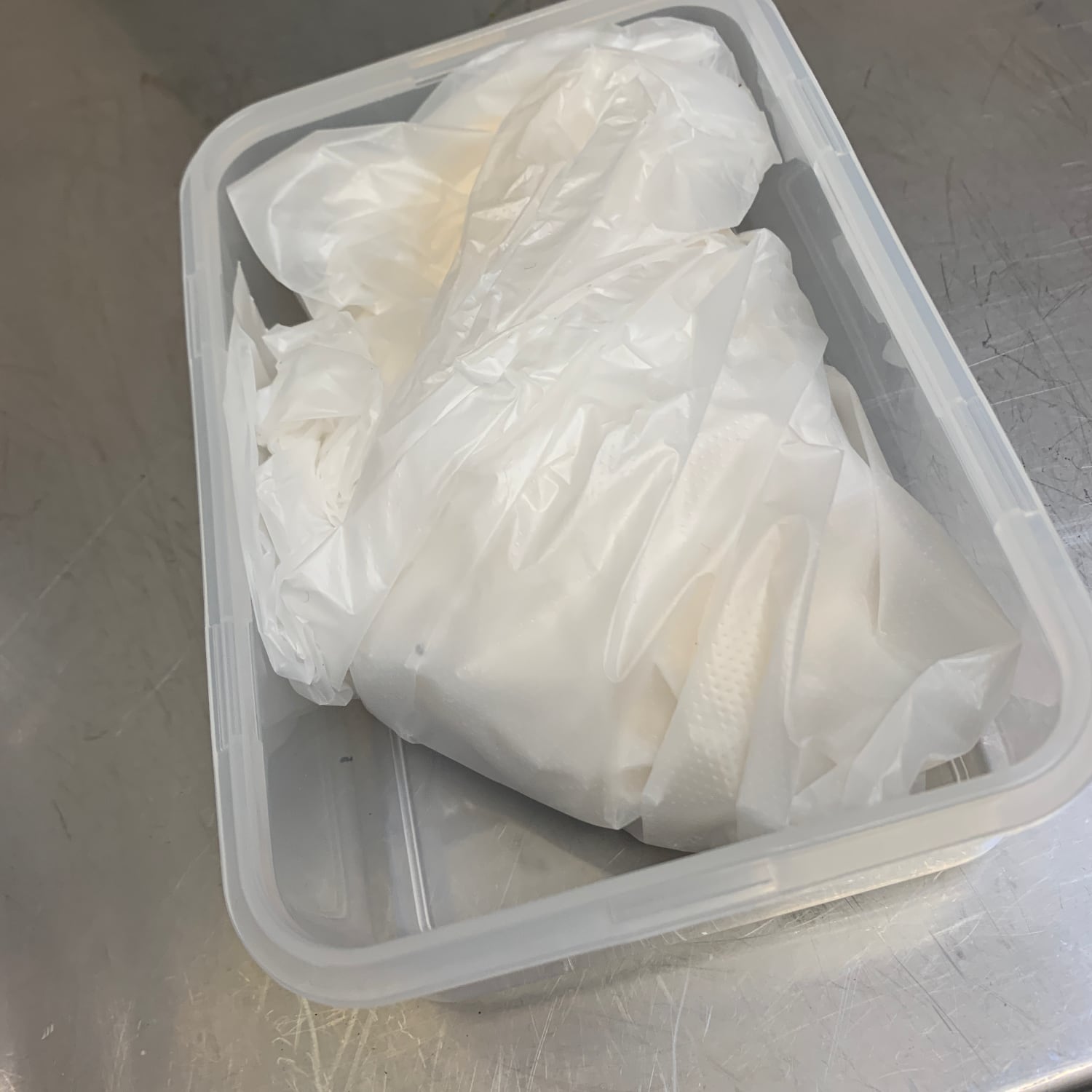
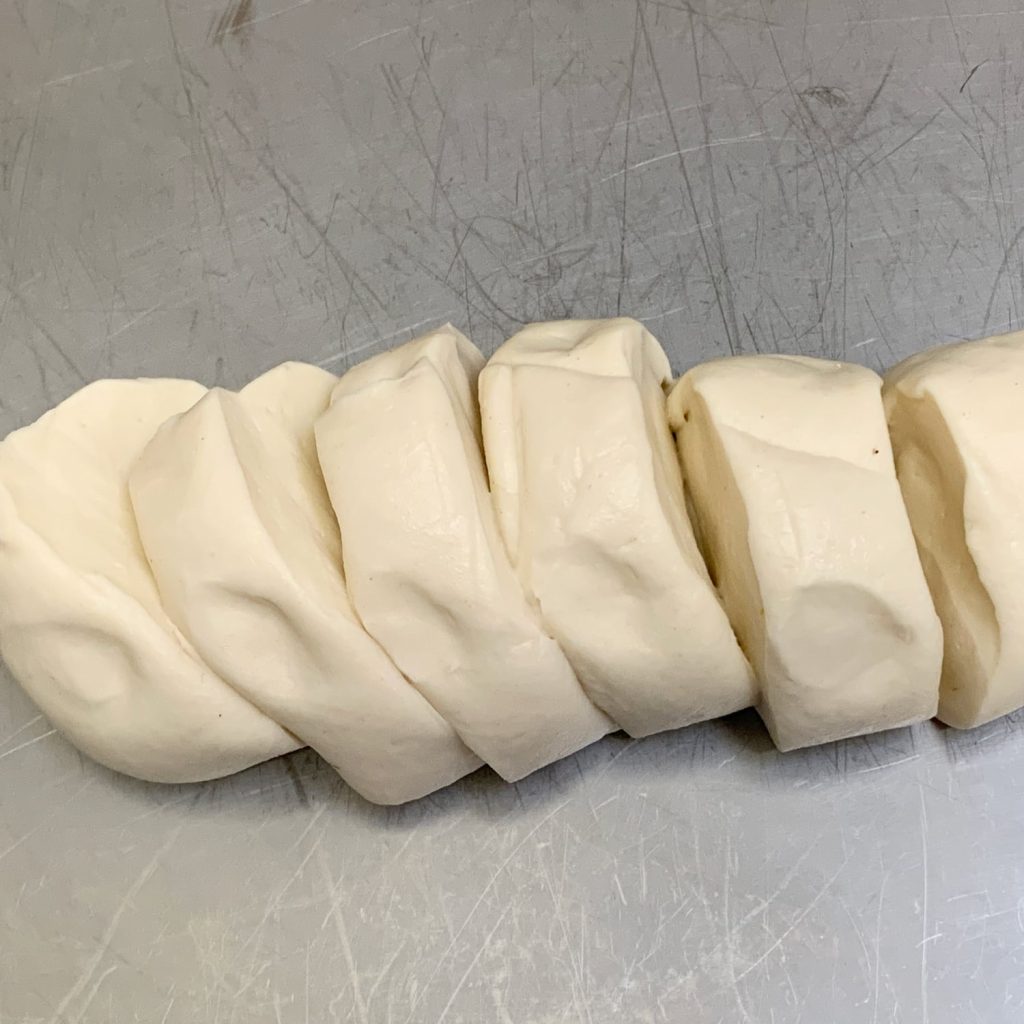

Apologies for the hands in the videos, but they are the only ones I have, battered, scarred and arthritic…but they work okay mainly!
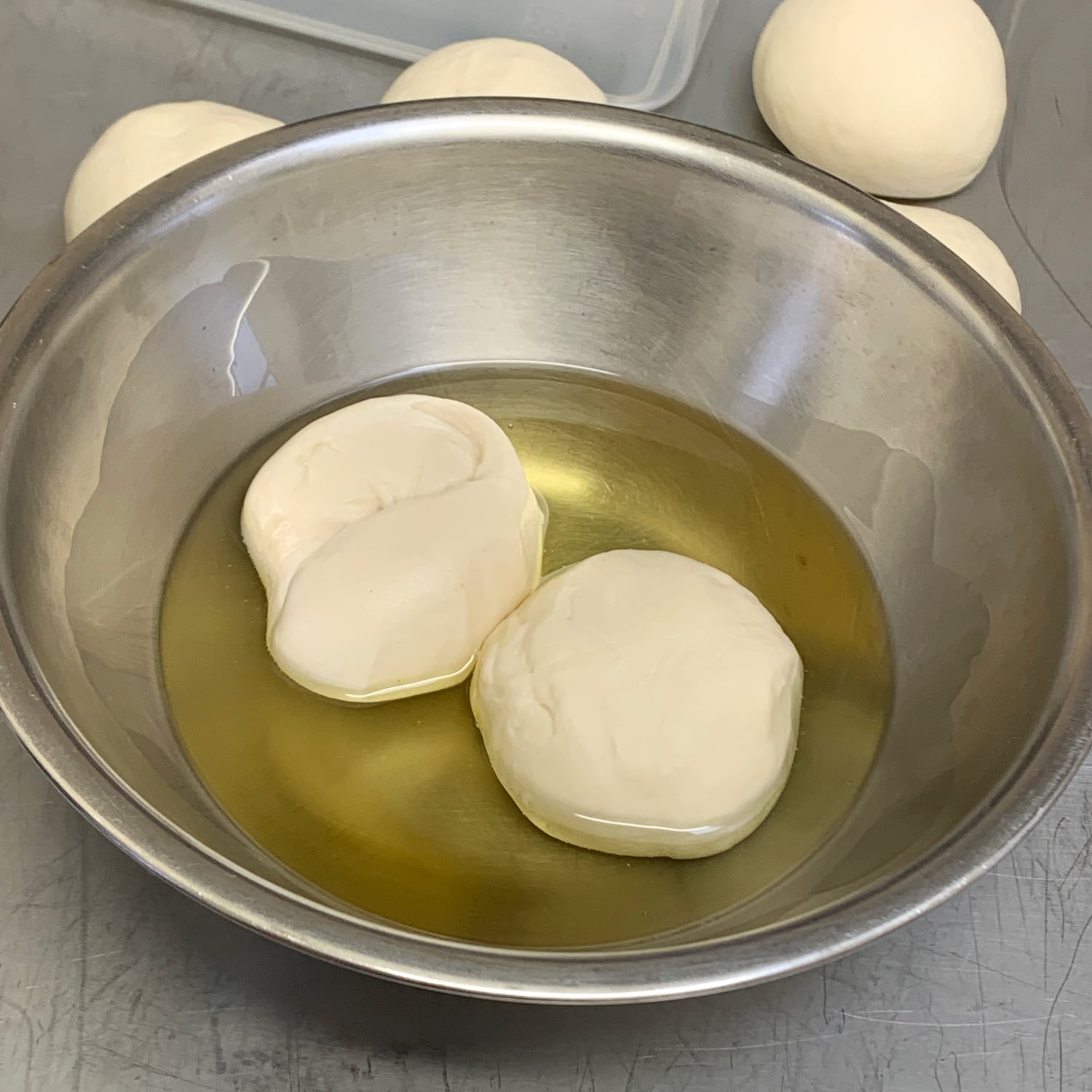

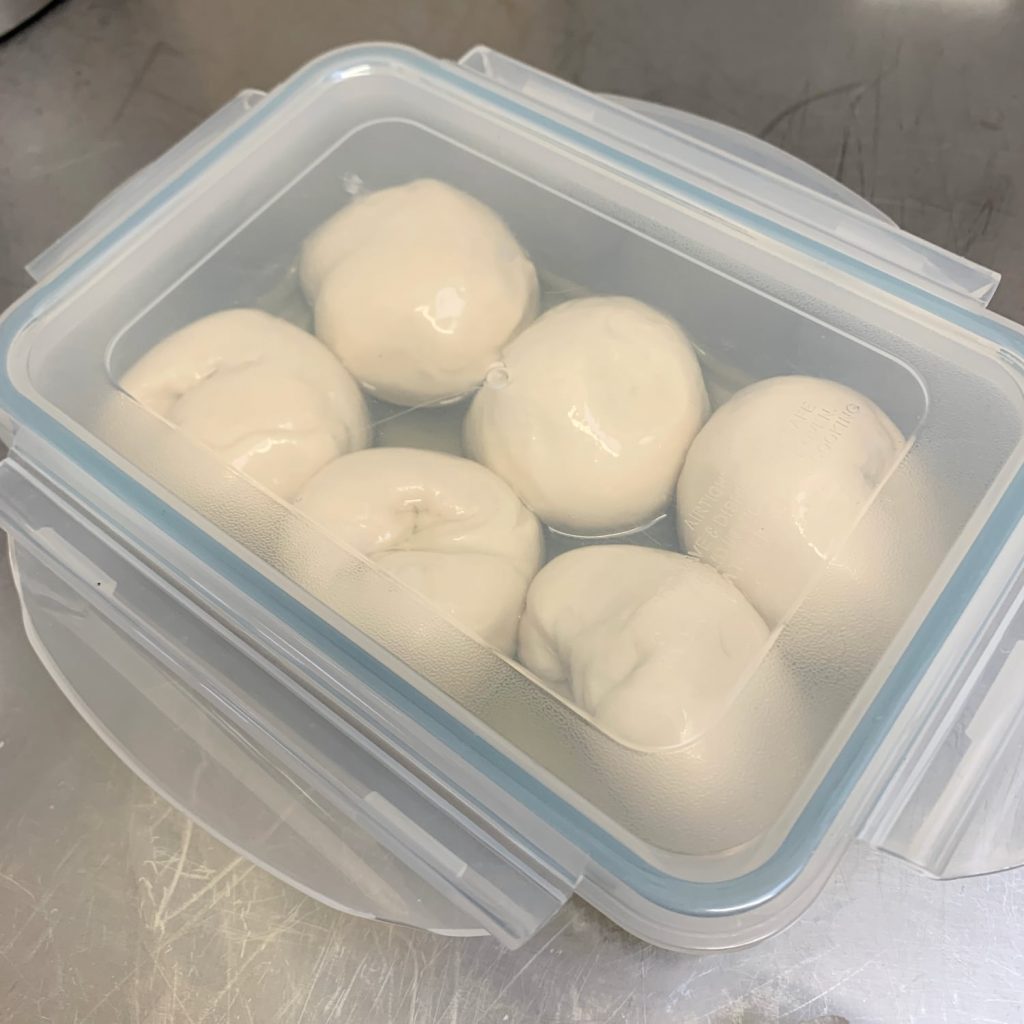
now
for the
hard
part

